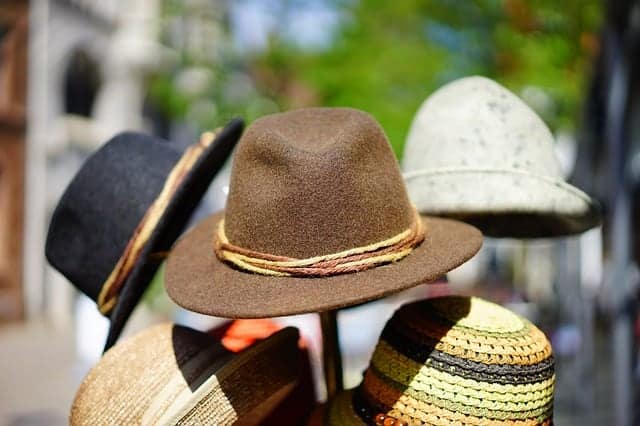
Hair transplants are a significant decision for many people who are looking to regain their confidence and restore their hair. However, if you’re considering this procedure, you might have questions about how it could impact your ability to wear hats or helmets. Let’s delve into this topic and provide some straightforward answers.
Understanding What Happens After a Hair Transplant
After undergoing a hair transplant procedure, it’s common to experience some swelling, tenderness, and redness in the area where the hair follicles were transplanted. This is a normal part of the healing process as your scalp recovers from the surgery. During this initial phase of healing, it’s essential to be gentle with your scalp and avoid anything that could potentially disrupt the healing process or cause discomfort.
The Importance of Patience During the Healing Process
The healing process after a hair transplant can take some time, and it’s essential to be patient and allow your body to heal properly. Rushing the process or trying to resume normal activities too soon could potentially compromise the results of the transplant. It’s crucial to follow your surgeon’s post-operative care instructions carefully and give your scalp the time it needs to heal fully.
When Can I Start Wearing Hats Again?
One common question that many people have after a hair transplant is when they can start wearing hats again. The timing for this can vary depending on how quickly your scalp heals and your surgeon’s recommendations. In general, it’s best to wait until the swelling and tenderness in your scalp have subsided before wearing hats.
Typically, this can take anywhere from two to four weeks after the procedure, but it’s essential to follow your surgeon’s guidance. When you do start wearing hats again, it’s important to choose styles that are loose-fitting and made from soft, breathable materials. This will help minimize any discomfort and allow your scalp to continue healing properly.
What About Wearing Helmets?
For individuals who engage in activities that require wearing helmets, such as cycling, motorcycling, or playing certain sports, the prospect of a hair transplant may raise concerns about helmet compatibility. While wearing a helmet after a hair transplant is generally safe, there are a few considerations to keep in mind to ensure optimal comfort and protection.
First and foremost, it’s crucial to wait until your scalp has fully healed before wearing a helmet, typically around two to four weeks after the procedure. During the initial healing phase, the scalp may be more sensitive, and wearing a helmet could cause unnecessary pressure or friction on the scalp, potentially leading to discomfort or complications. Once your surgeon gives you the green light to resume normal activities, you can gradually reintroduce wearing helmets into your routine.
Selecting the Right Headwear
When selecting hats or helmets to wear after a hair transplant, it’s essential to prioritize comfort and fit. Avoid hats or helmets that are too tight or restrictive, as they could potentially disrupt the healing process or cause discomfort. Instead, opt for styles that are loose-fitting and made from soft, breathable materials.
For helmets, look for options with adjustable straps and padding that can be customized to fit comfortably over your transplanted hair and accommodate any swelling or tenderness during the healing process. Additionally, consider investing in helmet liners or sweat-wicking headwear to absorb moisture and prevent chafing while wearing a helmet for extended periods.
Consultation with Your Surgeon
Before undergoing a hair transplant, it’s crucial to discuss any concerns or questions you may have about post-operative care, including wearing hats or helmets, with your surgeon. Your surgeon can provide personalized guidance and recommendations based on your individual circumstances and lifestyle. By following their advice and adhering to proper post-operative care instructions, you can ensure a smooth recovery and long-lasting results from your hair transplant procedure.
To wear or not to wear?
In conclusion, while undergoing a hair transplant may temporarily affect your ability to wear hats or helmets immediately after the procedure, it should not significantly impact your long-term headwear choices. With proper post-operative care and patience during the healing process, you can safely resume wearing hats and helmets without compromising the results of your hair transplant. If you have any concerns or questions about wearing headwear after a hair transplant, be sure to consult with your surgeon for personalized advice and guidance.
Schedule a Free Consultation
If you’re contemplating a hair transplant, you might be wondering about its implications for wearing hats or helmets. We encourage you to schedule a consultation with our team to delve into this topic further. By discussing your concerns with us, you can gain a deeper understanding of the potential effects of a hair transplant on your daily activities, including wearing hats or helmets.
Simply schedule a free consultation with GetHair to learn more about our hair transplant services and to begin the process.
To get more information about our treatments and hair transplant solutions, reach out to us.
References:
International Society of Hair Restoration Surgery (ISHRS)
American Academy of Dermatology (AAD)
American Board of Hair Restoration Surgery (ABHRS)
Medical News Today – “Hair Transplant: What to Expect”
Healthline – “Hair Transplant Recovery: What to Expect”
